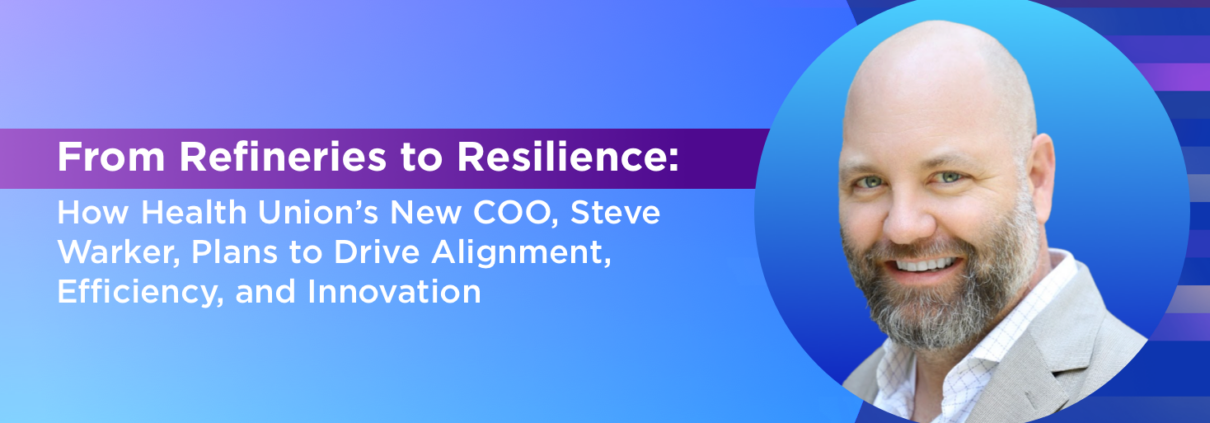Paid Search vs Pay-per-click (PPC): What is the difference?
“Paid search” refers to all ads that can be placed on Search Engine Results Pages (SERPs) like Google and Bing, while “PPC” (Pay-Per-Click) refers explicitly to ads that the advertiser only pays for when people click them. In other words, almost all paid search ads are PPC ads, but not all PPC ads are paid search ads[2]. PPC is a form of online marketing where advertisers pay each time a user clicks on one of their ads.
How Effective Is Paid Search Advertising for Healthcare Brands?
Paid search advertising is a lucrative digital marketing strategy to target HCPs or patients and is worth the investment in the competitive healthcare advertising field. It’s also economical; on average, businesses make $2 for every $1 spent[3] on paid search campaigns.
Paid search campaigns are an excellent bottom-of-the-funnel activity—they convert users actively searching for a product or service. Advertisers can set parameters to reach a targeted audience and pay solely when a targeted user clicks on an ad. Paid search ads reach customers who are already searching for certain healthcare services and products based on the keywords advertisers bid on, so those customers are much more likely to engage with an ad and convert.
Building a Successful Healthcare Paid Search Advertising Strategy
Setting Clear Objectives
Defining specific marketing goals and determining how you will measure success is essential to the success of healthcare paid search ad campaigns. What are the primary objectives of the digital campaign? How do they align with business goals and the target audience?
If you’re feeling stuck, one marketing rule of thumb is to stick to the SMART guide: establish goals that are specific, measurable, achievable, relevant, and time-bound. In other words, marketing goals should be exact, have quantitative results, make sense for your brand, and have a precise start and end date.
Metrics for Measuring Healthcare Paid Search Campaign Success
Based on campaign objectives, identify the key metrics that directly impact those objectives. Pinpointing the correct measurements for healthcare paid search advertising success involves syncing key performance indicators (KPIs) with business goals.
Common Paid Search KPIs
Clicks: Clicks are the number of users who click on an ad, whereas a click-through rate (CTR) refers to the percentage of users who saw the ad and then clicked on it. In other words, a CTR measures how well the ad captures users’ interest and can reflect how visible ads are to the target client or patient.
Conversions: Conversions occur when users click on an ad and follow through on a specific CTA, such as buying a product. For instance, if the goal is for a user to download a PDF of a pharmaceutical drug’s information guidelines, it’s better to measure the conversion rate (percentage of those users who clicked on the ad and then downloaded the PDF).
Lead Generation: Lead generation captures the interest of potential clients or patients (or leads) who have expressed interest in a product or service and have provided their contact information. The goal is to convert those leads into new patients and clients. For example, paid search campaigns can use this metric to identify and attract potential doctors who have shown interest in using a new medical device and monitor the number of leads they have acquired based on their advertising efforts.
Impression Share: Impression share is the percentage of impressions ads receive (how many times the ad was displayed to a user when they searched for relevant keywords or browsed relevant websites) compared to the total number of impressions they could receive (how many times it could have been displayed).
Cost Per Click (CPC): Cost-per-click is how much advertisers spend every time a user clicks on their ad.
Cost Per Acquisition (CPA): Cost-per-acquisition is how much an advertiser pays per conversion or whenever a user takes a specific action based on an ad (like signing up for a newsletter).
Return on Ad Spend (ROAS): Return on ad spend is the revenue earned for every dollar spent on a campaign.
How To Align Paid Search Objectives With Overall Marketing & Business Goals
Start by syncing marketing and business goals with specific paid search objectives and metrics to help your healthcare brand achieve them. Making clear-cut decisions on which platforms to use, the best keywords to implement, how to bid on them, and optimal landing page and ad formats will make a paid search campaign more fruitful.
Throughout the campaign, analyze campaign metrics and revise strategies to suit overarching goals better. Consider the customer journey and how the paid search campaign fits into it, and then track metrics at different campaign stages. For instance, if driving brand awareness about a new hospital program is the primary goal, focus on monitoring impressions and CTR. And if driving sign-ups (conversions) is the goal, track conversions and the conversion rate.
Advertisers can create a comprehensive online presence by combining paid search with other strategic forms of digital marketing, such as email marketing, display advertising, and social media. A cohesive strategy delivers consistency in messaging and branding across different channels. Potential customers, whether they are patients or HCPS, are more likely to encounter a brand across various platforms, reinforcing the ad’s message and increasing brand recall.
Keyword Research for Healthcare Paid Search
Targeting Keywords to Patients or HCPs
Selecting the right keywords is integral to running successful healthcare paid search campaigns, mainly because advertising to HCPs requires different strategies than advertising to patients. Advertisers must choose precise, relevant keywords that directly relate to their brand’s healthcare services, attract their target audience, and align with the goals of their campaign.
For instance, if a patient is searching for masks, it’s an opportunity for healthcare brands that offer masks to bid on similar keywords and increase their ad’s visibility in search engine results every time a user inputs that query. The targeted search terms and ad copy may focus on fashion, comfort, and hygiene benefits, with phrases like “most comfortable mask for traveling” or “best face mask for acne.”
On the other hand, if a mask distributor is marketing to HCPs, they should recognize that healthcare organizations are more interested in buying masks in bulk at discounted prices. So, the emphasis when incorporating keyword phrases should be on phrases such as “face mask for hospital use” or “surgical face mask for hospitals.”
By choosing keywords targeting specific audiences, healthcare marketers can increase the likelihood that their ads appear before users genuinely interested in their services, maximizing the likelihood of clicks and conversions. Understanding user intent, conducting a competitive analysis, and continuously refining campaign parameters will help advertisers target the ideal audience and yield a better return on investment.
Tools for Impactful Healthcare Keyword Research
Keyword research is crucial for the success of paid search campaigns because it influences the visibility and relevance of ads. There are many free and paid tools for advertisers to streamline this process and boost campaign efficiency. These tools provide valuable insights into competition levels and help select keywords that parallel business goals.
Two top free keyword research tools include Google Ads Keyword Planner and WordStream’s Free Keyword Tool. Google Ads Keyword Planner enables advertisers to search for new keywords relevant to their business offerings and is an excellent tool for conceptualizing campaigns with broader terms. You can even add keywords directly to a Google campaign.[4] However, this should be used with a more advanced service that identifies more focused keywords. Similarly, WordStream’s free keyword tool helps advertisers find new keywords, shows volume and cost-per-click data, and even offers long-tailed keyword variations.[5]
Conversely, paid search keyword research tools such as Semrush, Ahrefs, Moz, and SpyFu are more advanced and can offer all-inclusive SEO services such as in-depth research on search volume, advanced keyword filtering, and metrics beyond CPC.
Keyword Research Best Practices for Healthcare Brands
Leveraging best practices for paid search campaign keyword research is essential to hyper-target an ideal audience and create ad copy that reflects their pain points. Below, we outline the top six best practices for healthcare brands to incorporate into their paid search campaign strategy.
1. Consider Search Intent
Evaluate the intent behind the target audience’s searches. Tailor the keyword selection based on whether users are looking for information, comparing products, or ready to purchase.
2. Add Negative Keywords
Identify and add negative keywords to campaigns to prevent search engines, websites, or videos from displaying ads when users search for negative keywords. Negative keywords help improve a paid search campaign’s efficiency and ROI because ads will be more targeted and exclude consumers who may not be as interested in your services.
3. Group Keywords
Organize keywords into hyper-themed ad groups to improve ad relevance and the ad’s Quality Score. Grouping keywords also permits more targeted ad copy and landing pages.
4. Include Long-Tail Keywords
Long-tail keywords with three or more words are more specific and typically mimic how users write when using search engines. Incorporating these longer search terms is more cost-efficient because they are more specific and relevant to a user’s search intent, and fewer competitors are bidding for those keywords.
5. Complete Competitor Research
Use keyword research tools to analyze competitors’ paid search campaigns. Competitor research can help to identify the keywords they are targeting and help you discover new keyword opportunities.
6. Create a Content Map
Content maps can be helpful for paid search campaigns because they help marketers use higher volume keywords to create a content outline. Content maps group keywords from a keyword research tool and then form a content outline based on that grouping.
Crafting Compelling Ad Copy
Writing Ad Copy That Resonates With the Healthcare Audience
Whether it’s a patient searching for a trustworthy clinician or a doctor searching for more information on a pharmaceutical drug, consumers want their questions answered quickly and without frills. Healthcare paid search ad campaign copy should be concise and speak to the HCP’s or patient’s pain points or emotional triggers. The target audience needs to immediately see the value in clicking on an ad to learn more about your healthcare brand’s offerings.
Ad copy should provide a seamless transition for users from seeing the ad to engaging with your healthcare services. When crafting copy, focus on the key message you want to showcase on the landing page. Match the ad copy to reflect the landing page’s messaging to improve the user experience and make it possible for a search engine’s algorithm to know which services your brand provides based on the user’s search terms.
Incorporating Relevant Keywords Naturally
Integrating keywords into ad copy is central to successful paid search campaigns, but advertisers should be wary of keyword stuffing. Ad copy should sound natural and feel accessible to users instead of robotic. Incorporate relevant keywords into headings and copy that match users’ search intent and resonate with their pain points.
Use conversational language that reflects how audiences are searching for information. People often pose questions in search engines such as “How can I relieve eczema flare-ups?” so it’s best to use similar language when promoting services and products.
A/B Testing for Optimal Performance
A/B testing (a.k.a. split testing) for paid search ad campaign copy helps advertisers discover which messages resonate the most with their audiences. A/B tests are used to test different ad copy variations to understand what ad copy resonates best with their target audience.
Designing Landing Pages for Healthcare Paid Search Campaigns
Crafting Strong Headers for Paid Search Ad Copy
Once consumers click on an ad, they’ll arrive at a healthcare brand’s landing page to learn more about the ad’s value offerings. Their first introduction to the landing page’s content is the header, so it needs to be captivating, concise, and directly summarize the content users will be reading. For consistency and better engagement, incorporate priority keywords that reflect users’ search intent and match the copy to the corresponding ad’s key messaging. Users are more likely to bounce if the two are misaligned or if the message is unclear.
Prioritizing Mobile Optimization for Healthcare Websites
Using mobile devices to search for information online continues to grow; mobile devices (excluding tablets) generated 58.67% of global website traffic[6] in Q4 of 2023. In other words, landing pages must be optimized for mobile devices so consumers can easily access content across devices. Mobile-friendly landing pages enhance the user experience and lead to higher conversion rates.
Here are some best practices for creating mobile-optimized landing pages for a healthcare paid search campaign:
- Create a responsive design that seamlessly adapts to various screen sizes.
- Optimize the landing page for fast loading times on mobile devices. For example, you can compress images, minimize HTTP requests, and leverage browser caching to improve page speed.
- Streamline the navigation by making certain users can find everything they need. For instance, feature a clear and concise menu and avoid unnecessary elements that might overwhelm mobile users.
- Content should be accessible and concise for users engaging on smaller screens. Break up text into smaller paragraphs and use different formatting styles like bullet points to make the text easier to scan.
- Minimize pop-ups or make them user-friendly by adding the ability to opt-out so that they don’t interfere with user experience.
- Regularly test landing pages across devices and browsers to confirm they load correctly and offer a consistently positive user experience.
Creating Compelling Calls-to-Action for Conversion
Suppose paid search advertising aims to get HCPs to take a specific action, such as signing up for a newsletter or offering contact details to be contacted later by a representative. The landing page copy must direct readers to follow that specific call-to-action (CTA). Implement compelling, persuasive language throughout the landing page that meets the target audience’s needs. Every word needs to serve the purpose of directing readers to follow through on the CTA. The copy should inform readers about the product or service, offer clear reasons for how the healthcare brand’s offerings provide value, and highlight the brand’s authority and credibility on the topic.
When reviewing landing page copy, a great rule of thumb is to ask, “So what?” What are the key takeaways to the landing page, and how does following through on the CTA help the target patient or HCP? Make the answer clear with actionable language such as “Speak to a customer representative now,” “Sign up for our newsletter,” or “Register for our webinar.” Providing a clear guide can direct consumers to complete the action you desire from them.
Budgeting and Bid Management for Healthcare Paid Search Campaigns
Allocating Budgets Effectively Across Different Campaigns
Allocate your budget based on the goals and priorities of the paid search campaign. Whether driving sales, building brand awareness, generating more leads, or otherwise, advertising goals and projected outcomes must inform the budget across different campaigns. Advertisers can use historical data, industry benchmarks, and competitor insights[7] to estimate costs per click and conversion rates.
It’s also wise to understand the target audience’s journey to determine which platforms and channels to use (Programmatic Display, Instagram, TikTok, etc)—research where you should allocate funds based on their online behavior. From there, decide how much control you want over the bidding process with either manual or automated bidding, and then decide on a daily budget per ad campaign or ad group.[8]
Implementing Bid Strategies for Optimal ROI
Selecting the right bidding strategy for a paid search campaign should depend on overall business goals and budget. One of the most cost-effective bid strategies is cost-per-click, in which advertisers pay every time a user clicks on the ad. CPC bidding is often ideal if you have a specific goal, like generating leads, and platforms offer the option to adjust bids automatically to maintain a set budget.[9]
Another popular strategy is cost-per-thousand impressions (CPM), in which advertisers pay based on the number of impressions an ad receives. This strategy is excellent when the goal is to increase brand awareness instead of generating leads or sales and tends to work well on social platforms like Facebook and LinkedIn.[9]
Advertisers can manually bid by setting a maximum bid amount for each keyword and then adjust accordingly. This option offers more control over CPC, although it requires more time and supervision.[9]
Regularly Reviewing & Adjusting Budget Allocations Based on Performance
When allocating a paid search campaign ad budget, set a smaller initial budget to test the ad’s performance.7 You can then adjust bid amounts based on keyword competitiveness while monitoring key performance indicators like clicks, costs-per-click, conversions, and impression shares. Refining a paid search campaign is an ongoing process. Analytics tools such as Google Analytics can help advertisers track what is working, so you can refine the campaign by adjusting bids, keywords, ad copy, landing page content, or otherwise, to save on ad spend. For example, if specific keywords perform better, allocate more of the budget to them.
Finding a Successful Healthcare Paid Search Advertising Strategy
By defining clear objectives, optimizing campaign elements, and monitoring key metrics, healthcare marketers can see their paid search efforts contribute directly to the growth and success of their healthcare businesses. Connecting with a healthcare paid search advertising agency like Health Union can help your brand create dynamic ad campaigns that support your marketing and business goals and help you reach your target audience. Paid search ad agencies like ours have long-standing partnerships with various ad platforms, make data-driven decisions that align with your business goals, and possess the industry knowledge and paid search expertise to drive results.
Contact one of our representatives today to discover how our paid search experts can help you craft a winning advertising strategy.
_____________________________________________________________________
Learn more about Health Union’s vision to transform data-driven, healthcare marketing: The HUman Side of Data.
Sources
- Heitman, S. (2023, May 24). Healthcare search advertising benchmarks for 2023 [Data & tips]. LocaliQ. https://localiq.com/blog/healthcare-search-advertising-benchmarks/#:~:text=Admittedly%2C%20this%20doesn%27t%20sound,over%201%20billion%20every%20day
- Are paid search and PPC the same thing? (2022, January 10). Digivizer. https://digivizer.com/blog/are-paid-search-and-ppc-the-same-thing/#:~:text=Often%20the%20terms%20are%20used,model%20in%20paid%20search%20advertising
- “80 PPC stats you need to know for 2024”. (n.d.). WebFX. https://www.webfx.com/ppc/statistics/#
- Opsvig, E. (2022, January 2). 8 Free keyword research tools for PPC advertising. Portent. https://www.portent.com/blog/ppc/8-free-keyword-research-tools-ppc-advertising.htm
- Free keyword tool. (n.d.). WordStream. https://www.wordstream.com/keywords
- Ceci, L. (2024, January 25). Percentage of mobile device website traffic worldwide from 1st quarter 2015 to 4th quarter 2023. Statista. https://www.statista.com/statistics/277125/share-of-website-traffic-coming-from-mobile-devices/
- Jamshidi, S.F. (n.d.). How can you set a budget for your PPC campaign? LinkedIn. https://www.linkedin.com/advice/3/how-can-you-set-budget-your-ppc-campaign-skills-digital-marketing-72q1e
- Angulo, F. (n.d.). How can you set a budget for your PPC campaign? LinkedIn. https://www.linkedin.com/advice/3/how-can-you-set-budget-your-ppc-campaign-skills-digital-marketing-72q1e
- What are PPC bidding strategies? (n.d.). Lead Genera. https://leadgenera.com/knowledge-hub/ppc/what-are-ppc-bidding-strategies/#:~:text=A%20bidding%20strategy%20is%20the,common%20type%20of%20bidding%20strategy.




